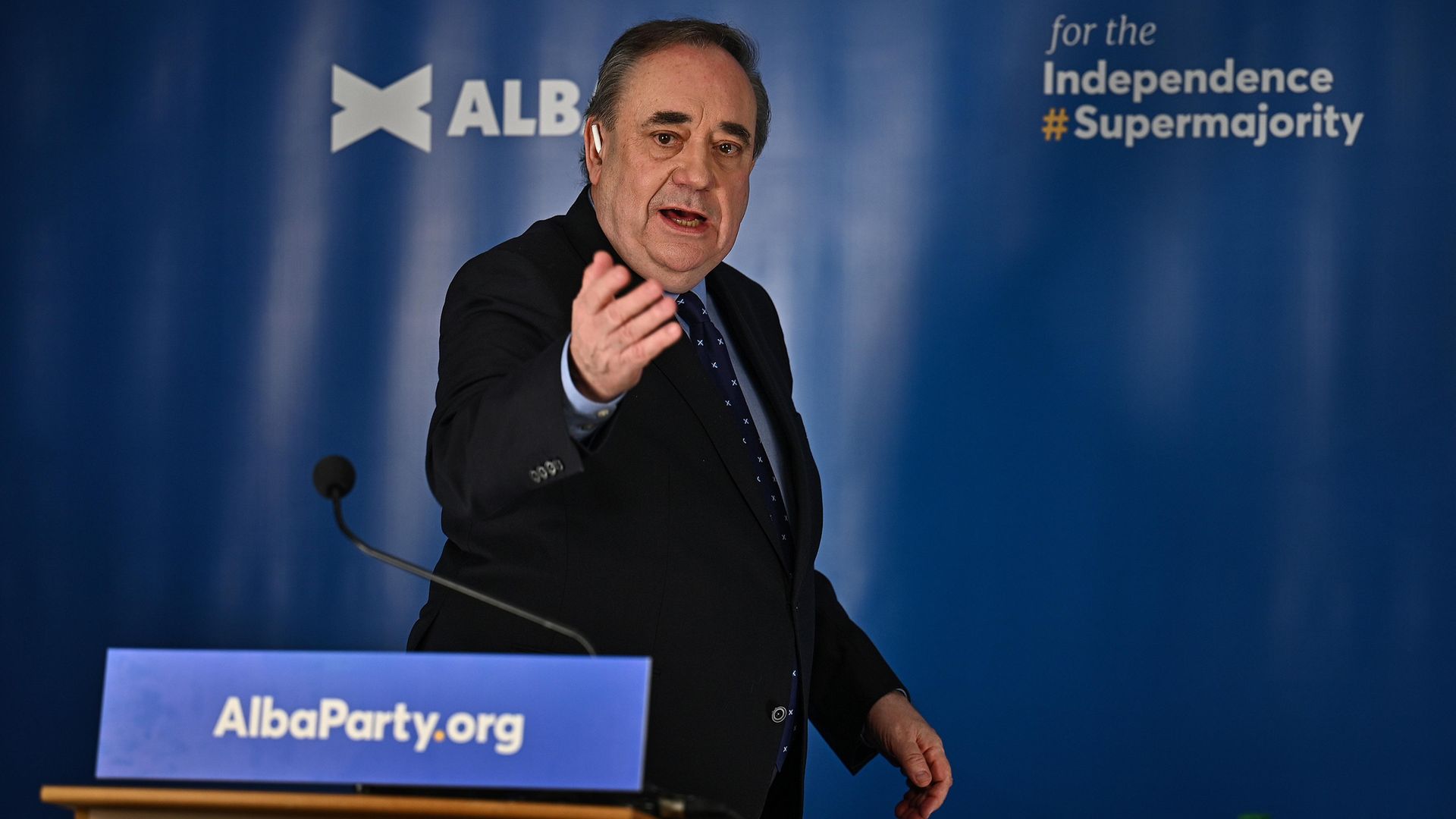
JAMES BALL on how the launch of the former first minister’s new party might play out at the polls.
Alex Salmond and the intricacies of the Scottish voting system are not what Nicola Sturgeon wanted to be the focus in the run-up to this May’s Holyrood elections.
Until just a few months ago, it felt like the narrative for the 2021 contest would be a clear one: the contest would be fought on the SNP’s favourite turf, that of Scottish independence.
An SNP majority would signal strong support send a clear message to Westminster that it should not attempt to block a second referendum on the issue, less than a decade after the first.
Salmond, despite being the SNP leader who promised that 2014 referendum would settle the matter of independence for a generation, would not argue with any of that narrative: he is as pro-independence as ever.
What has changed is his relationship to the SNP – and to Sturgeon, his one-time protégé – as a result of the extraordinary internecine war which has broken out in the independence movement in the wake of his acquittal over 12 allegations of sex offences last year.
The scandal has left Salmond outside the SNP and personally hugely unpopular – he polls even worse north of the border than Boris Johnson, a rating which once would have been unbelievable.
But it has also put him as the helm of a new political party: Alba, which essentially brands itself as a pro-independence party without any of the annoying social liberalism that comes with the modern SNP or the (also pro-independence) Scottish Greens.
Salmond knows he has absolutely no hope of rivalling the SNP at the ballot box – while there may be doubts as to whether the SNP will get an overall majority in an electoral system designed not to deliver one, no-one is predicting the SNP will be anything other than the largest party after next month’s vote.
Instead, Salmond is making a dual pitch: firstly, that there is space for another pro-independence party to attract a somewhat different kind of voter than those who would opt for the SNP or Greens. Secondly, though, he is trying to exploit Scotland’s proportional representation system, making a case that if people split their vote between the SNP and Alba, it will ultimately deliver more pro-independence seats.
This argument is disputed by the SNP and is far from clear-cut, but it serves as a reminder that no political system is un-gameable and without its downsides. As many on the pro-Remain side of politics advocate for reform of the electoral system elsewhere in the UK, a look at Scotland and at Salmond’s claims raises useful, broader questions.
For voters south of the border, it will be helpful at this point to set out how elections to Holyrood actually work – as they operate under the additional member system (AMS) rather than first-past-the-post.
Scotland elects a total of 129 MSPs, 73 of whom are elected to local constituencies in much the same way as MPs under first-past-the-post. What is different from Westminster elections is that there are then a further 56 MSPs allocated on a ‘regional list’. Voters cast two ballots, one for an individual to represent them in their constituency, and another for which party they support on the regional list.
The regional vote is intended to compensate parties which get a lot of votes but don’t win many (or any) seats. Regional votes for each party are counted, but before a first winner is picked, each total is divided by the number of constituency seats the party won, plus one – with the highest total then getting the first seat.
The process is then repeated eight times in each region, dividing the regional vote total for each party by seats won, plus one, until all the seats are allocated.
This is easier to understand with an example. Let’s imagine a region with one constituency and two regional seats. Party A wins the constituency seat and gets 10,000 votes in the regional ballot. Party B gets 6,000 votes in the regional ballot.
Calculating the first regional seat, we divide A’s 10,000 votes by two – one seat plus one – to get 5,000, less than Party B’s 6,000 (divided by one, since it has no seats yet), meaning Party B get the first regional seat. For the second seat, Party A is still on 5,000 votes, but Party B is now down to 3,000 (because its original total of 6,000 is now divided by one seat, plus one) – so Party A get the second seat.
The system therefore ‘punishes’ parties that get lots of constituency seats, and ‘rewards’ parties that pick up quite a lot of votes but few if any constituency seats. This is the logic that Salmond is trying to exploit: vote for the SNP in your constituency, he is telling voters, but vote for Alba in the regional list.
That, he argues, could work to stop a pro-unionist party getting the seat instead, and so increase the pro-independence mandate of the election.
The reality is far murkier and more complex – simply because each regional list elects eight MSPs from at least six viable parties. It is possible the maths works out as Salmond sets out. But it is also possible Alba simply snatches a seat the SNP would otherwise have taken. It is even possible that they split the vote in such a way that hands a pro-union party a seat it otherwise wouldn’t have taken.
It is simply impossible for polling, parties or voters to know which of the three effects is the most likely. If Salmond’s intervention in the election is a sincere one – based on a love for independence, rather than his own ego – it is one based more on hope than on sound data.
No voting system is perfect and every voting system is gameable. Italy uses a similar AMS system to Scotland, which ended up being exploited, with major parties creating ‘fake’ sister parties to secure extra regional seats that otherwise would have gone to smaller rivals.
Just as critics of first-past-the-post complain it crowds out smaller parties, critics of proportional systems note that they can give fringe figures and fringe parties disproportionate power.
This can happen under first-past-the-post, as we saw when DUP held the Conservatives hostage under Theresa May, but is much likelier in PR systems – creating a very specific headache for Nicola Sturgeon.
She would like the fog to clear in May revealing another SNP majority government, or even a ‘super-majority’ of 60% or more seats, to give her the strongest possible hand to push the independence case. Her worst case scenario would be a majority of pro-union parties – she may still be able to hold power as the largest party, but the case for a referendum would fizzle.
That’s looking particularly unlikely right now – but leaves the door open for the headache scenario: Sturgeon has ruled out working with Salmond or Alba, and clearly does not want to rely on her predecessor turned bitter rival.
But it may be that if Alba picks up a seat or two, the combination of the SNP, Scottish Greens and Alba could form a pro-independence majority at Holyrood – but would it be one upon which Sturgeon would feel comfortable to rely?
Polling shows the majority of Scotland’s voters have had quite enough of Alex Salmond. May’s ballot might mean that Scottish politics has, nonetheless, not seen the last of him.
What do you think? Have your say on this and more by emailing letters@theneweuropean.co.uk










